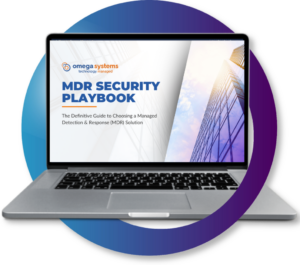

Infostealers have become one of the most treacherous cyber threats of 2024. These stealthy malware programs, designed to extract sensitive information from devices, pose a significant risk to individuals and businesses alike, as demonstrated by the recent Snowflake breach – the largest data breach in history.
As workforces become increasingly distributed and device usage more flexible, the attack surface for infostealers expands exponentially. This blog delves into the evolving tactics of these malicious programs, the potential impact on businesses, and critical steps to protect your valuable information.
Infostealers are a type of malware that surreptitiously collects information from compromised devices. This can include login credentials, personally identifiable information (PII), financial data, and even sensitive corporate information. Once this data is captured, it’s transmitted to the attacker, who can use it for various malicious purposes, including identity theft, financial fraud, and unauthorized access to corporate networks.
Infostealers typically operate in a multi-stage process:
For businesses, the consequences of an infostealer attack can be severe. Stolen credentials can lead to unauthorized access to sensitive data, financial losses, and reputational damage. Moreover, if an infostealer infiltrates a corporate network, it can act as a gateway for further attacks, such as ransomware or advanced persistent threats (APTs).
The infostealer landscape has dramatically changed in 2024, with several key trends emerging:
The dark web has become a central hub for the infostealer ecosystem. Malware-as-a-Service (MaaS) platforms, easily accessible through the anonymity offered by cryptocurrency transactions, have democratized the creation and distribution of malicious software. This has led to a surge in infostealers, making them available to a wider range of cybercriminals. The profitability of this illicit trade is evidenced by the 150% increase in stolen credential sales last year.
Infostealer malware exploits social media platforms like Facebook and LinkedIn to steal credentials and fuel sophisticated social engineering attacks. By harvesting public profile data such as emails, phone numbers, and locations, infostealers can craft more convincing phishing attempts. They also compromise accounts to spread malicious links and malware. Even business pages are vulnerable to fraudulent activities. Essentially, any information shared on social media is a potential target for infostealers, who can mimic authentic content and impersonate brands to steal data.
Infostealers are increasingly leveraging AI to enhance their capabilities and evade detection. These malicious programs can now automate data extraction, create highly convincing phishing attacks, and even analyze stolen data for maximum profit. The surge in AI-related credential theft, exemplified by the 225,000 stolen ChatGPT credentials in the past year, underscores the growing threat posed by AI in the hands of cybercriminals.
MFA fatigue attacks, or ‘MFA bombing,’ is another troubling trend. Infostealer malware extracts stolen credentials and then repeatedly bombards the victim with MFA prompts. The constant barrage can overwhelm the victim, leading them to inadvertently approve a request and grant access to their account. This tactic combines infostealer activity with social engineering, highlighting the creativity and persistence of cybercriminals in exploiting security vulnerabilities.
The shift towards remote work has transformed the workplace but also created new vulnerabilities. BYOD (bring-your-own-device) policies, while offering flexibility, have inadvertently widened the attack surface for infostealers. Personal devices, often lacking robust security measures, can serve as entry points for malware. This blurred line between personal and professional data makes it increasingly challenging to protect sensitive information.
Infostealers are increasingly targeting sectors rich in sensitive data. Financial services, healthcare, data storage, and the gaming industry are prime targets. The rise of cryptocurrencies has also made digital wallets a lucrative target.
The data storage industry is particularly vulnerable. The Snowflake breach serves as a stark reminder of the consequences. In May 2024, the cybersecurity world was rocked by the Snowflake breach, a massive data compromise affecting over 30 million bank account details and 28 million credit card numbers. Unlike traditional breaches targeting vulnerabilities within a platform, this attack exploited weaknesses in customer account security, emphasizing the importance of protecting data across the entire ecosystem.
Organizations must adopt a layered approach to protect against infostealers. Here are some critical strategies to secure your digital assets:
With more than two decades of award-winning expertise as both an MSP and MSSP, Omega Systems is your trusted partner in fortifying your digital environment. Our Smart Guard MDR (managed detection and response) solution provides round-the-clock protection against evolving threats. From implementing proactive safeguards 24×7 to responding to incidents with precision, our cybersecurity experts deliver tailored solutions to safeguard your organization. Contact us today and let us help you build a resilient defense against infostealers and other cyber threats.
 The Definitive Guide to Choosing an MDR Solution
The Definitive Guide to Choosing an MDR SolutionNavigate the complexities of cybersecurity with our 5-step MDR Security Playbook & discover how to choose the right managed detection & response solution for your business.